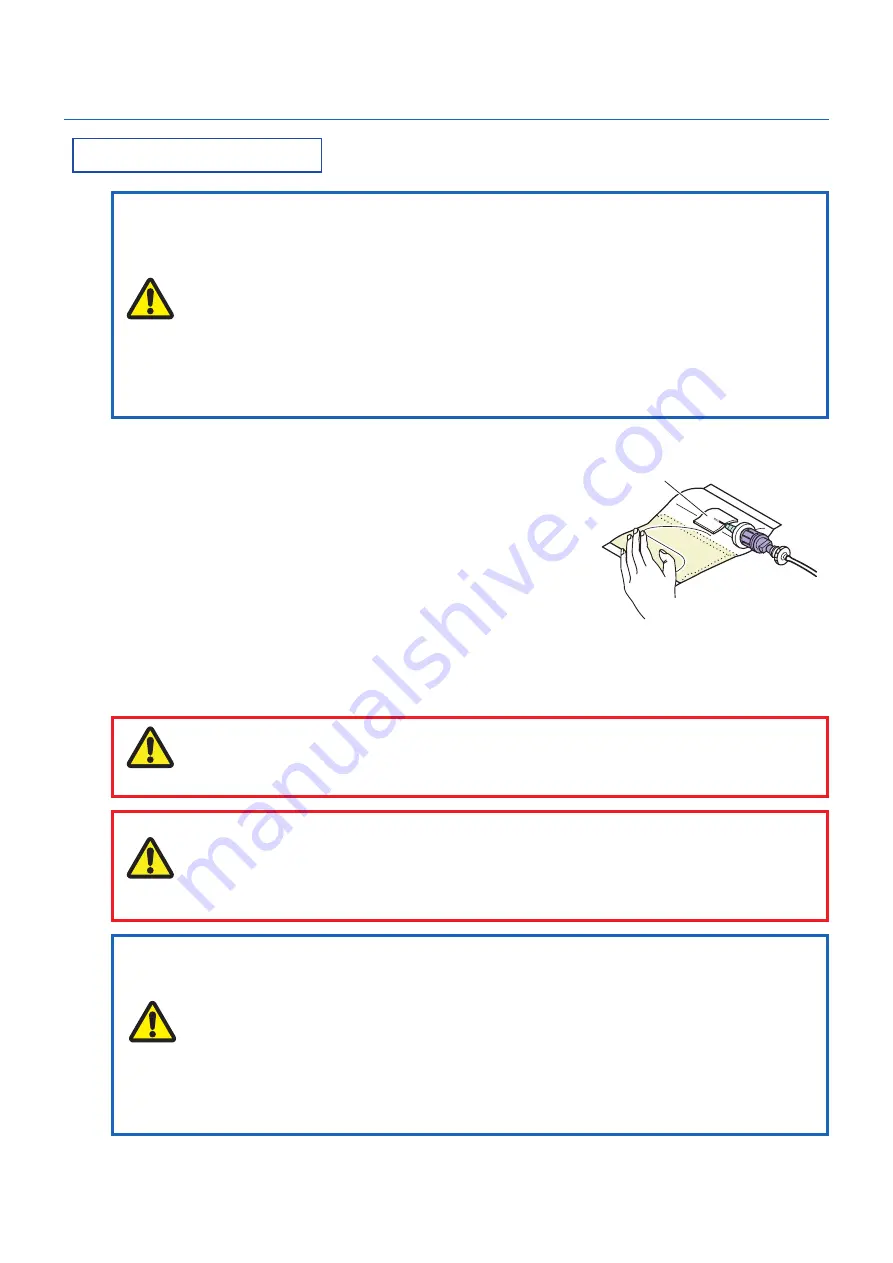
8
Adhesive
rubber
4. Measurement and recording
Preparing to measure
•
It may not be possible to measure if the sample gas quantity is less than 10mL.
•
A measurement can be taken even if the inside of the sample is depressurized, but if the
package’s internal pressure is less than -30kPa, a correct measurement value may not be
obtained. Note that depressurization will occur easily after gas suction, especially if the gas
quantity is low. In this case, a measurement can be taken using the optional “gas sampling
glass tube (model: GS-2)”.
•
The measurement may take longer if the inside of the sample is depressurized.
•
A measurement can be taken even if the inside of the sample is pressurized. However, if
the package’s internal pressure is higher than +40kPa, the components could break when
the needle is pierced, or a correct measured value may not be obtained. In this case, a
measurement can be taken using the optional “gas sampling glass tube (model: GS-2)”.
1.
Shift the contents in the pack to one side and hold with a
hand to create a space for piercing the needle.
2.
Attach the enclosed adhesive rubber over the air space.
Adhesive rubber cutting dimension reference: 1cm x 1 cm square
3.
Lightly press down on one side of the bag, and set the
needle in the sample gas.
Do not suction the contents.
A measurement error will occur if powder, etc., gets clogged in the needle.
Note that the minute amount of liquid in the sample gas is blocked by the membrane filter.
Warning
Take care not to stab the human body with the needle. There is a risk of blindness, puncture
wounds, or cuts.
•
If pressure is applied into the pack from the set needle using an air gun, etc., the internal
pump or sensor could be damaged. If the needle is clogged, replace it with a new needle.
•
Continuing use with a clogged needle, membrane filter, check valve, or sampling tube with
fitting will deteriorate the sensor.
•
If the liquid is accidentally suctioned, the membrane filter that has absorbed the liquid will not
pass the gas, preventing a correct measurement. Note that if the liquid contains oil, it might
pass through the membrane filter. Refer to “Maintenance” (pages 26 to 27) and replace
the needle, membrane filter, check valve, and sampling tube with fitting contaminated with
liquid or oil with new parts. Check the housing to confirm that the suctioned liquid and oil
have not adhered to the oxygen sensor. If adhered, remove the oxygen sensor and clean
the inside of the housing. The metal mesh at the front center of the oxygen sensor can be
cleaned by lightly wiping with tissue paper.
•
Using the needle, membrane filter, check valve, and sampling tube with fitting in a clogged
state may prevent a correct measurement.
Caution
Note
Note















































